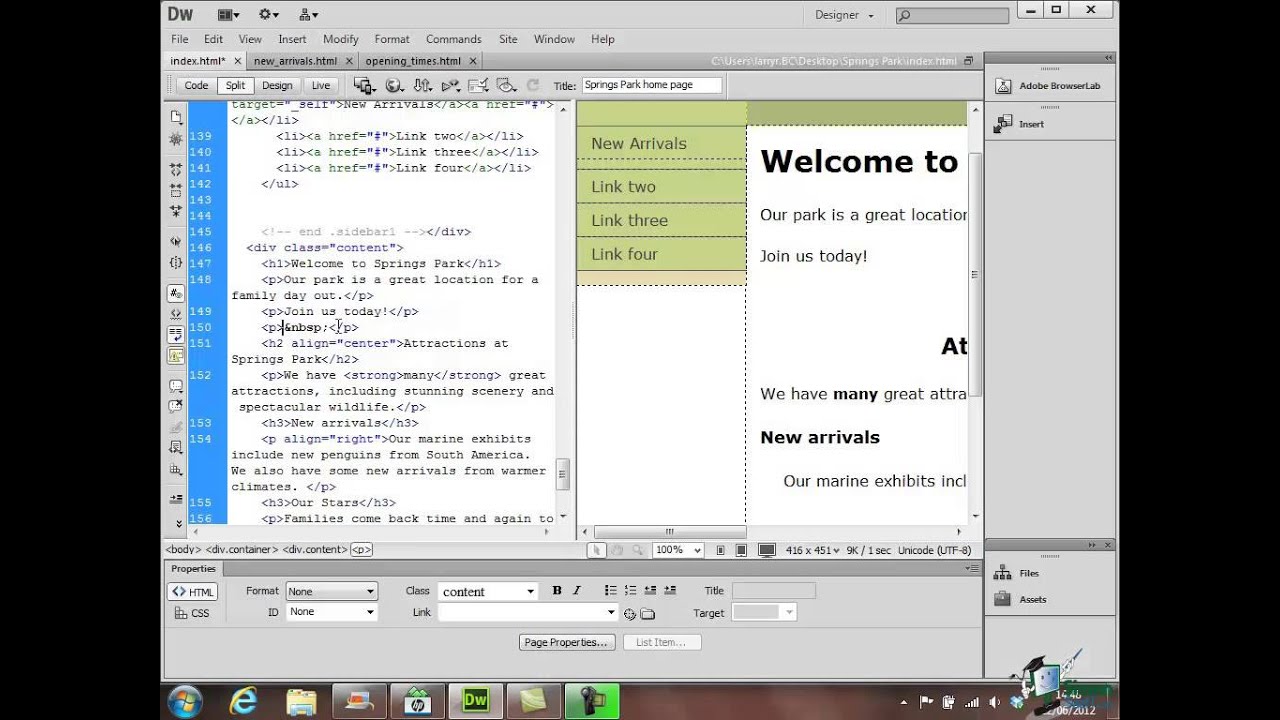The Complete Guide to Text Formatting in Adobe Dreamweaver: Elevate Your Typography Skills

Introduction: Text formatting is a crucial aspect of web design, influencing readability, visual appeal, and user experience. Adobe Dreamweaver, a leading web development tool, offers powerful features for formatting text, allowing designers and developers to create engaging and aesthetically pleasing content. In this comprehensive guide, we’ll delve into the step-by-step process of formatting text in Adobe Dreamweaver, covering everything from basic font styling to advanced typography techniques and optimization strategies.
Section 1: Understanding the Importance of Text Formatting 1.1 Role of Text Formatting: Discuss the significance of text formatting in web design, including its impact on readability, user engagement, and brand identity. 1.2 Typography and Design Aesthetics: Explore how typography choices, such as font selection, size, spacing, and alignment, contribute to the overall visual appeal and coherence of a web page. 1.3 Accessibility Considerations: Highlight the importance of accessible text formatting practices, including sufficient color contrast, clear typography hierarchy, and semantic HTML markup, to ensure inclusive design for all users.
Section 2: Getting Started with Text Formatting in Adobe Dreamweaver 2.1 Launching Adobe Dreamweaver: Open Adobe Dreamweaver on your computer to begin formatting text. 2.2 Creating or Opening a Web Page: Create a new HTML file or open an existing web page project where you want to format text. 2.3 Navigating to Design View: Switch to Design View in Dreamweaver to visualize the layout of your web page and identify areas for text formatting.
Section 3: Basic Text Formatting Options 3.1 Font Selection: Choose appropriate fonts for your text elements, considering factors such as readability, brand identity, and design aesthetics. 3.2 Font Size Adjustment: Adjust the font size of text elements in Dreamweaver to establish a clear hierarchy and emphasize important content. 3.3 Font Styling: Apply font styles such as bold, italic, underline, and strikethrough to text elements to add emphasis and visual interest. 3.4 Text Color: Customize the color of text elements using CSS styles or inline styles in Dreamweaver to align with your brand palette and enhance visual appeal.
Section 4: Advanced Text Formatting Techniques 4.1 Line Spacing and Leading: Adjust line spacing and leading in Dreamweaver to control the vertical spacing between lines of text, improving readability and visual harmony. 4.2 Text Alignment: Align text elements horizontally and vertically within designated areas on the web page layout using alignment options in Dreamweaver. 4.3 Text Indentation and Alignment: Create consistent text indentation and alignment using CSS styles or HTML tags such as <p>, <div>, and <span> to maintain visual consistency. 4.4 Text Shadows and Effects: Apply text shadows, outlines, gradients, and other visual effects to text elements in Dreamweaver to create depth and dimensionality.
Section 5: Working with Typography 5.1 Font Pairing: Pair complementary fonts for headings, body text, and decorative elements to create a cohesive typography style and hierarchy. 5.2 Font Weight and Variants: Experiment with font weights and variants (e.g., light, regular, bold, italic) to create contrast and hierarchy in typography. 5.3 Typographic Scale: Establish a typographic scale in Dreamweaver by defining consistent font sizes and spacing ratios for headings, paragraphs, and other text elements. 5.4 Web Safe Fonts vs. Web Fonts: Choose between web-safe fonts and web fonts (e.g., Google Fonts, Adobe Fonts) in Dreamweaver to enhance typography versatility and visual impact.
Section 6: Optimizing Text for Readability and Accessibility 6.1 Readability Optimization: Optimize text readability by ensuring sufficient line length, contrast, and spacing between letters and words in Dreamweaver. 6.2 Accessibility Optimization: Enhance text accessibility in Dreamweaver by providing descriptive alternative text (alt text), semantic HTML markup, and keyboard navigation support for screen readers and assistive technologies. 6.3 Responsive Typography: Implement responsive typography techniques in Dreamweaver to ensure text elements adapt dynamically to different screen sizes and viewport dimensions, improving readability and user experience on mobile devices.
Section 7: Testing and Previewing Text Formatting 7.1 Previewing in Browser: Preview your web page in different web browsers and devices within Dreamweaver to test the appearance and responsiveness of text formatting. 7.2 Accessibility Testing: Conduct accessibility testing of text elements in Dreamweaver using screen reader software or browser extensions to ensure they are properly labeled and accessible to all users. 7.3 Readability Testing: Evaluate the readability of text elements in Dreamweaver using readability analysis tools or by soliciting feedback from users to identify areas for improvement.
Section 8: Best Practices and Tips 8.1 Maintain Consistency: Maintain consistency in text formatting across your website by using the same fonts, sizes, colors, and styles for headings, paragraphs, and other text elements. 8.2 Prioritize Readability: Prioritize readability in text formatting by choosing legible fonts, appropriate font sizes, and sufficient line spacing to ensure easy reading for users. 8.3 Test Across Devices: Test text formatting across different devices and screen sizes to ensure readability and visual consistency on desktops, laptops, tablets, and smartphones. 8.4 Stay Updated: Stay informed about emerging typography trends, best practices, and new features in Adobe Dreamweaver to continually refine your text formatting skills and stay ahead of the curve.
Section 9: Troubleshooting and FAQs 9.1 Common Text Formatting Issues: Address common issues encountered when formatting text in Dreamweaver, such as font rendering discrepancies, alignment problems, and spacing inconsistencies. 9.2 Frequently Asked Questions: Provide answers to frequently asked questions about text formatting in Adobe Dreamweaver, covering topics such as font licensing, font embedding, and cross-browser compatibility.
Conclusion: By following this comprehensive guide, you’ve mastered the art of text formatting in Adobe Dreamweaver, empowering you to create visually stunning and readable text content for your web projects. With its intuitive tools and versatile features, Dreamweaver offers endless possibilities for typography experimentation and refinement. Now, armed with the knowledge and skills, unleash your creativity, elevate your typography game, and captivate your audience with beautifully formatted text. Happy designing!







